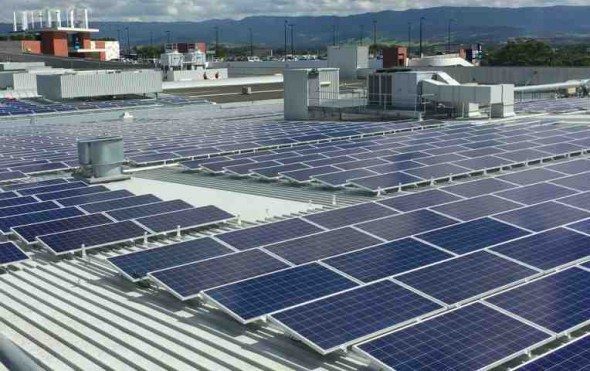An increase in interest and uptake of solar by Australia’s commercial sector has been supported by the results of a new survey, with nearly one-quarter of businesses claiming to have already tapped rooftop solar as a measure to cut electricity costs and be more environmentally responsible.

Commercial solar, while much slower to take off in Australia than the residential market, has been making up some ground over the past year, but is yet to take hold.To boost the market, schemes like the Clean Energy Finance Corp-backed Westpac Bank loan facility have been launched to encourage Australian businesses to invest in solar, battery storage, energy efficient technologies and electric vehicles.
But progress is being made. According to the survey, published on Monday by energy management company Energy Action, 23 per cent of businesses generate some portion of their electricity supply using solar PV, up from just 14 per cent just two years ago. Another 37 per cent said they had “implemented solar PV measures in their business,” up from 23 per cent in 2014.
Meanwhile, the proportion of businesses who said they were seriously considering investing in technologies like solar PV and even battery storage and smart energy management systems was 84 per cent. Another 43 per cent reported they now had a formal energy management strategy in place.
“The results of this year’s survey indicate that energy management and procurement are increasingly becoming a core part of corporate strategy, and show ongoing growth in the number of businesses outsourcing these services,” said Energy Action CEO Scott Wooldridge in a statement on Monday.
“Our first Energy Insights Survey was conducted in 2012, so we now have a unique understanding about prevailing trends in the energy sector, and of how businesses manage their energy needs and interact with the Australian Energy Market.”
Businesses have also maintained a strong commitment to energy efficiency and sustainability initiatives, the survey found, with 72 per cent claiming to have made investments in energy efficiency and sustainability programs that resulted in savings of over $10,000 a year.
“While the findings of previous studies suggested that a critical shift was underway, the 2016 results reinforce a prevailing view that energy management has evolved from pursuing cost-cutting initiatives to making a strategic commitment to an integrated energy management approach,” Wooldridge said.
“It is also encouraging that the report indicates an ongoing awareness of energy efficiency and sustainability, along with improved knowledge and understanding of energy markets. The increasing implementation of solar PV across a range of industry sectors is also notable.”










